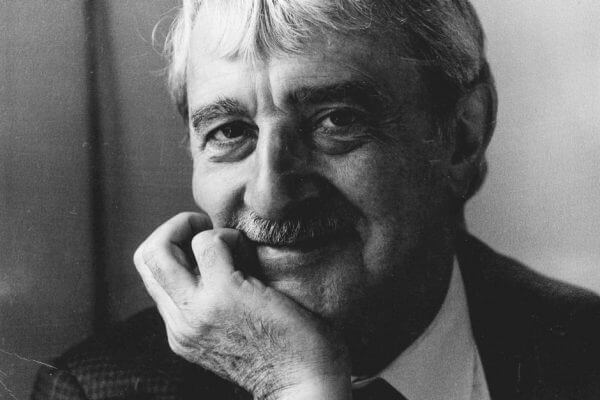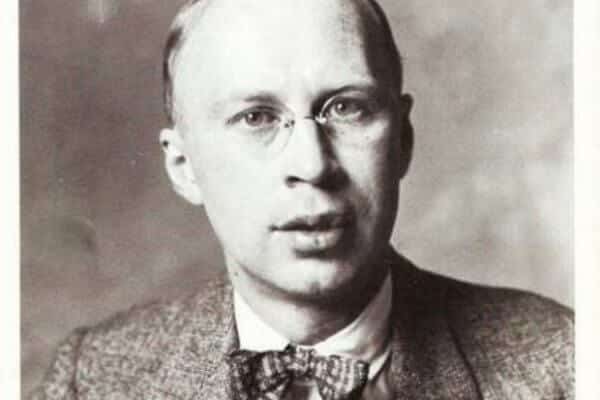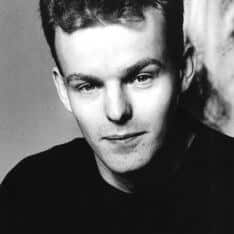
Kenneth MacMillan was born in Dunfermline, Scotland in 1929. His strength of purpose can be traced back to the very beginning of his career when he read an advertisement announcing that scholarships for boys were available at the Sadler’s Wells (now Royal) Ballet School. He was determined to make his way there and he did. Sir Kenneth completed his dance training at the Sadler’s Wells School and in 1946 became a founding member of the Sadler’s Wells Theatre Ballet, a new company formed by Ninette de Valois. He gained his first dance experience at the Wells and then moved to Covent Garden. In 1952, he returned to the Wells and there found his true vocation as a choreographer. At Sadler’s Wells a gifted group of young dancers was in the process of forming a Choreographic Group to give performances of new works. The first performance by the Group was on February 1, 1953 and the hit of the evening was MacMillan’s first ballet, Somnambulism, to music by Stan Kenton.
The following year he staged a story ballet, Laiderette, and Dame Ninette decided to commission an entirely new work from MacMillan: Danses Concertantes. This work immediately established MacMillan as a choreographer of note.
In 1966, MacMillan received an invitation to direct the ballet company at the Deutsche Oper in West Berlin. Encouraged to accept by Dame Ninette, he took over the company and staged his own productions of The Sleeping Beauty and Swan Lake. He also created the one-act ballet Anastasia which was subsequently to become the third act of his full-length Anastasia.
Sir Kenneth had proved himself as the natural successor to Ashton as Director of The Royal Ballet, a post he assumed (at first in association with John Field) at the beginning of the 1970-71 season. Sir Kenneth continued to choreograph and in 1974 created both Manon (his third full-length work) and Elite Syncopations. In 1976, MacMillan made Requiem for the Stuttgart Ballet and in 1978 he created for that company My Brother, My Sisters. Mayerling was first produced at Covent Garden on February 14, 1978. As in so many ballets, he took a compassionate view of doomed characters, seeking to show why tragedy overtakes them. Mayerling had a triumph at its American premiere in Los Angeles in 1978 and was the subject of a London Weekend Television film which won the 1978 music category of the prestigious Prix Italia — the first ballet ever to do so.
More recent works have been La Fin du Jour, which draws inspiration from the style of the 1930’s and the fashionable way of life shattered by World War II, and Gloria, a lament and a thanksgiving for the generation that perished in World War I. MacMillan created his fifth full-evening ballet, Isadora, in 1981. It received its world premiere at Covent Garden on April 30, 1981.
Sir Kenneth made his debut as a director of plays when he staged Ionesco’s The Chairs and The Lesson at the New Inn, Ealing. He also produced Strindberg’s Dance of Death at the Manchester Royal Exchange Theatre.
He received his knighthood in the 1983 Birthday Honours, and resided in London with his wife, Deborah and daughter Charlotte. Sir Kenneth died in London in October, 1992 at the age of 62. At the time of his death he was choreographing a revival of the musical Carousel.

Sergei Prokofiev was born in Sontsovka, Ekaterinslav, in 1891, and died in Moscow in 1953. He was a pupil of Liadov, Rimsky-Korsakov and others at the St. Petersburg Conservatory. He became widely known as a brilliant pianist and applied his knowledge of the piano in his compositions, winning the Rubinstein prize with his first piano concerto at age 23. His appearances were usually as the interpreter of his own compositions. For some years, he lived in exile, traveling on a League of Nations passport. He visited Russia in 1927, 1929, and again in 1932. He finally settled in Moscow with his family in 1934.
His style may be described as the antithesis of that of Scriabin. He aimed at the realization of primitive emotions, and playfulness and satire are also characteristics. His sympathies and taste inclined toward the classical, but his manner was
independent.
Among his works are the Scythian Suite for orchestra; the ballets, Chout (or The Buffoon), The Prodigal Son, Romeo and Juliet and Cinderella; eleven operas, including The Love for Three Oranges (libretto after Gozzi), War and Peace, and The Flaming Angel; a fairy tale for children, Peter and the Wolf (a monologue with spoken voice with orchestral accompaniment); five piano concertos; violin concertos; symphonies; the brief piano pieces Sarcasms; nine piano sonatas and songs.
In 1948, Prokofiev, along with other leading musicians, came under censure by the Soviet authorities for the alleged “formalistic distortions and anti-democratic tendencies of his music” and he promised to begin “a search for a clearer and more meaningful language.”
He died on the same day as Joseph Stalin, and in 1957, his Seventh Symphony was posthumously awarded a Lenin Prize.

Paul Andrews studied stage design at Wimbledon School of Art and Design. After seeing his degree show, Kenneth MacMillan asked him to design the set and costumes for Romeo and Juliet. He subsequently designed West Side Story for Irina Brown (Cambridge Festival and later on tour), All’s Well That Ends Well and The Rivals (Theatr Clwyd), Father’s Day, The Taming of the Shrew, Gypsy, The Merchant of Venice, Mail Order Bride, The Sound of Music, King Lear, Call in the Night (West Yorkshire Playhouse), Shostakovich’s Cherymushki (Pimlico Opera/Lyric Theatre, Hammersmith), Blood Libel (Norwich Playhouse), Clocks and Whistles (Bush Theatre), A Midsummer Night’s Dream (Southern Shakespeare Festival, Florida), A Doll’s House (Birmingham Rep), Swan Lake (Norway Opera), Poor Super Man (Manchester Royal Exchange), Grace Note and Hurly Burly (Old Vic and West End), Words Apart (Royal Ballet’s ‘Dance Bites’). He also worked on the films Robin Hood, Prince of Thieves (as wardrobe assistant and buyer) and Judge Dredd (in conceptual costume design). He died in December 1997.